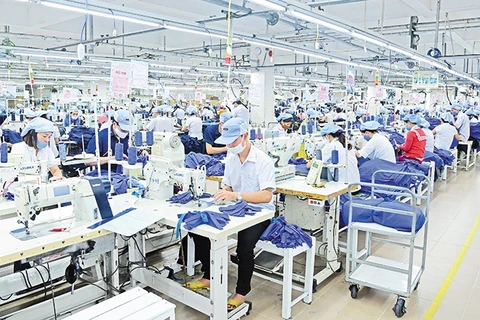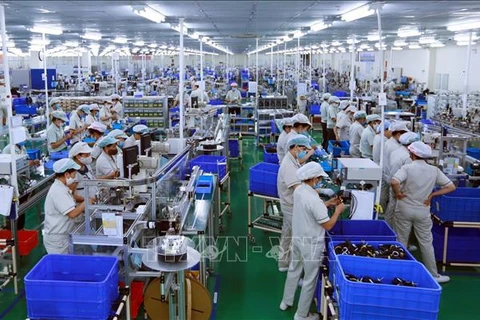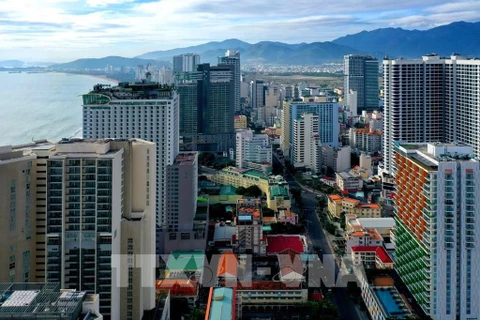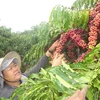Hanoi (VNA) - World Bank experts expect Vietnam's growth to be 6.6 percent in 2021, 2.9 percent higher than the previous year.
The Asia-Pacific region will experience a lopsided recovery from the economic effects of the coronavirus pandemic, the World Bank said in its latest economic outlook for the region, due to uneven containment of the disease and widely varying vaccine distribution timelines.
According to the report, only China and Vietnam have surpassed pre-pandemic levels of growth, while for most major economies output remained on average around 5 percent below pre-pandemic levels. Hardest hit of all have been the Pacific Island countries.
Economic performance has depended on the effectiveness of virus containment, the ability to take advantage of the revival of international trade, and the capacity of governments to provide fiscal and monetary support. Countries that have been unable to fully restore export industries, or which are overly dependent on tourism, will see the steepest challenges in achieving even modest growth in 2021.
The mixed outlook is encapsulated by the impact on the 11 economies of Southeast Asia. Here, Vietnam is projected to be the best performer, as it was in 2020, when it was the only nation in the region to avoid recession. According to the World Bank, Vietnam’s economy is expected to grow by 6.6 percent this year, up from 2.9 percent in 2020.
Due to the impacts of the pandemic, the remaining major economies will only grow at an average of about 4.6 percent, slightly lower than the pre-crisis growth rate. The recovery of tourism-dependent island economies is expected to be particularly difficult.
The report estimates that the US stimulus package will likely increase the growth rate of countries in the region by 1 percentage point in 2021 and accelerate the recovery process. The outlook remains fraught if a COVID-19 vaccine is slowly rolled out, causing growth to drop by as much as 1 percentage point in some countries.
Much also depends on the speed and efficacy of vaccination campaigns, shadowed by the risk that more transmissible variants of COVID-19 will set back economic recovery efforts.
The World Bank states that even once nations claw their way back to pre-pandemic levels of growth, COVID-19 is likely to leave longer lasting scars. These including a sharp uptick in poverty and widening income inequalities in many parts of the region.
World Bank Regional Vice President for East Asia and the Pacific Victoria Kwakwa said, countries need to act urgently to protect the vulnerable, while ensuring an inclusive, green and sustainable recovery.
The report also notes an alarming increase in domestic violence, in the context of COVID-19 lockdowns and the economic stresses that have accompanied the pandemic.
According to Aaditya Mattoo, World Bank’s Chief Economist of the East Asia and Pacific, the region was set for “an increase in inequality along different dimensions, between poor and rich people, men and women, small firms and big firms.”
“More than ever, we need international cooperation to contain the epidemic, support the economy and recovery process”, Aaditya Mattoo said.
China can play an important role by increasing exports of medical products, boosting domestic consumption and taking stronger climate measures. The country will also benefit from a safer world and more balanced growth, the World Bank’s Chief Economist maintained.
The report calls for international cooperation in need-based vaccine production, approval and distribution to help contain COVID-19. Coordination in fiscal policy will increase the collective impact as some governments tend to be less supportive. In addition to cooperation in reducing emissions, poor developing countries also need international support to take more in-depth climate measures./.























